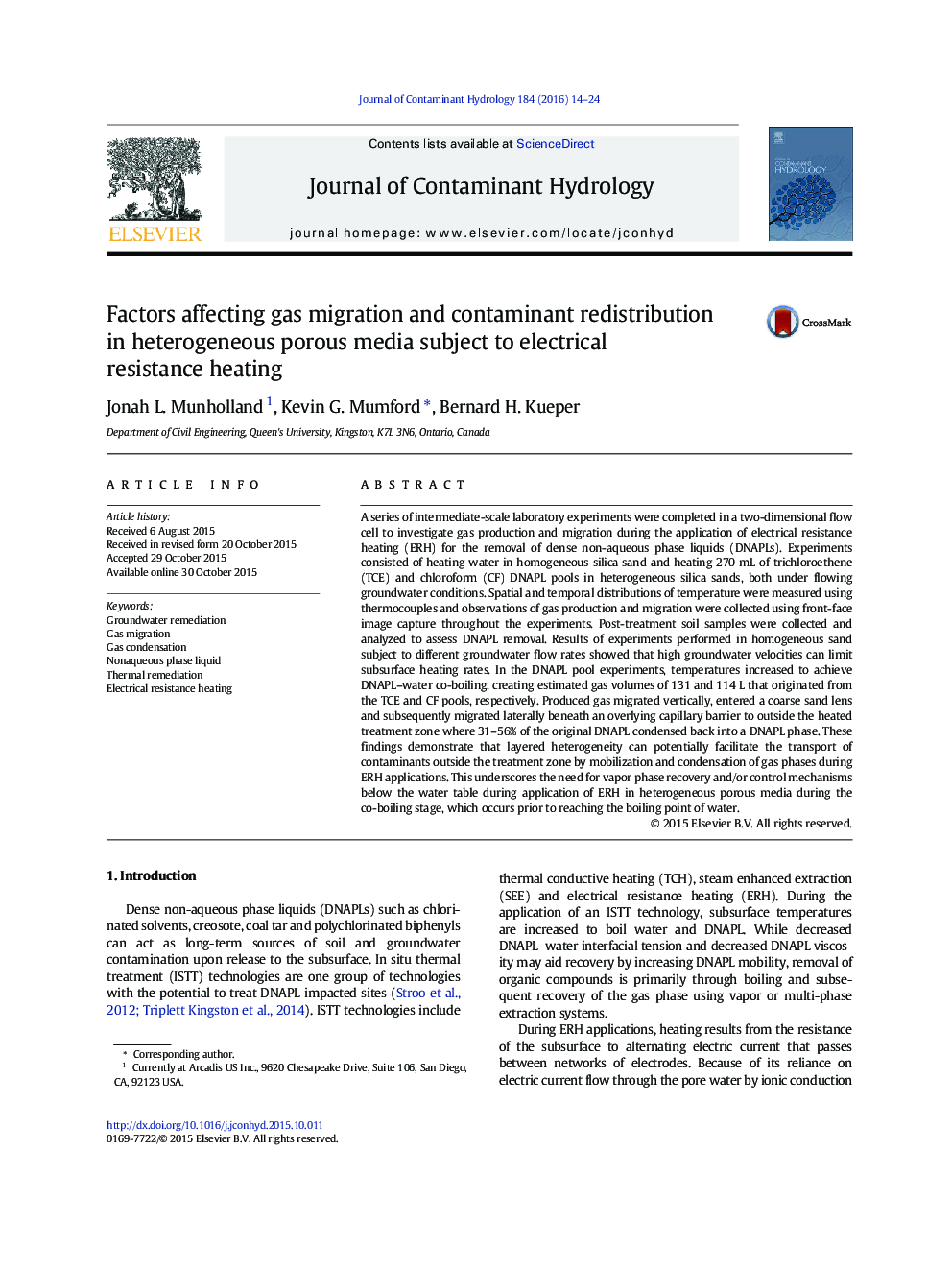| کد مقاله | کد نشریه | سال انتشار | مقاله انگلیسی | نسخه تمام متن |
|---|---|---|---|---|
| 4546415 | 1627026 | 2016 | 11 صفحه PDF | دانلود رایگان |
• Electrical resistance heating of water and DNAPL in a laboratory flow cell
• Measurements of temperature and electric current combined with images of gas production
• Migration of gas produced during DNAPL–water co-boiling controlled by capillary barrier
• Gas migration outside of the heated zone resulted in condensation back into a DNAPL phase
A series of intermediate-scale laboratory experiments were completed in a two-dimensional flow cell to investigate gas production and migration during the application of electrical resistance heating (ERH) for the removal of dense non-aqueous phase liquids (DNAPLs). Experiments consisted of heating water in homogeneous silica sand and heating 270 mL of trichloroethene (TCE) and chloroform (CF) DNAPL pools in heterogeneous silica sands, both under flowing groundwater conditions. Spatial and temporal distributions of temperature were measured using thermocouples and observations of gas production and migration were collected using front-face image capture throughout the experiments. Post-treatment soil samples were collected and analyzed to assess DNAPL removal. Results of experiments performed in homogeneous sand subject to different groundwater flow rates showed that high groundwater velocities can limit subsurface heating rates. In the DNAPL pool experiments, temperatures increased to achieve DNAPL–water co-boiling, creating estimated gas volumes of 131 and 114 L that originated from the TCE and CF pools, respectively. Produced gas migrated vertically, entered a coarse sand lens and subsequently migrated laterally beneath an overlying capillary barrier to outside the heated treatment zone where 31–56% of the original DNAPL condensed back into a DNAPL phase. These findings demonstrate that layered heterogeneity can potentially facilitate the transport of contaminants outside the treatment zone by mobilization and condensation of gas phases during ERH applications. This underscores the need for vapor phase recovery and/or control mechanisms below the water table during application of ERH in heterogeneous porous media during the co-boiling stage, which occurs prior to reaching the boiling point of water.
Journal: Journal of Contaminant Hydrology - Volume 184, January 2016, Pages 14–24
